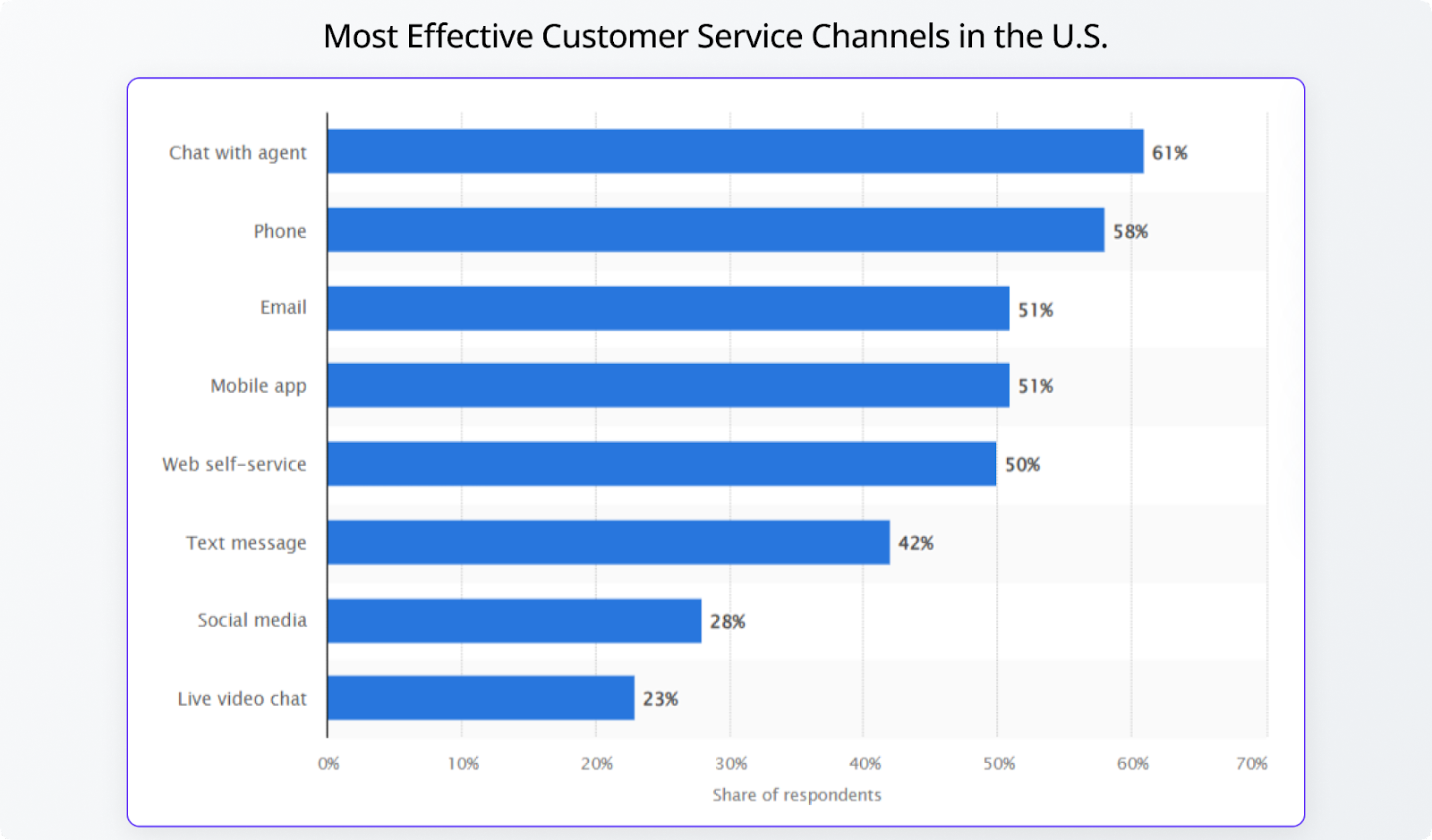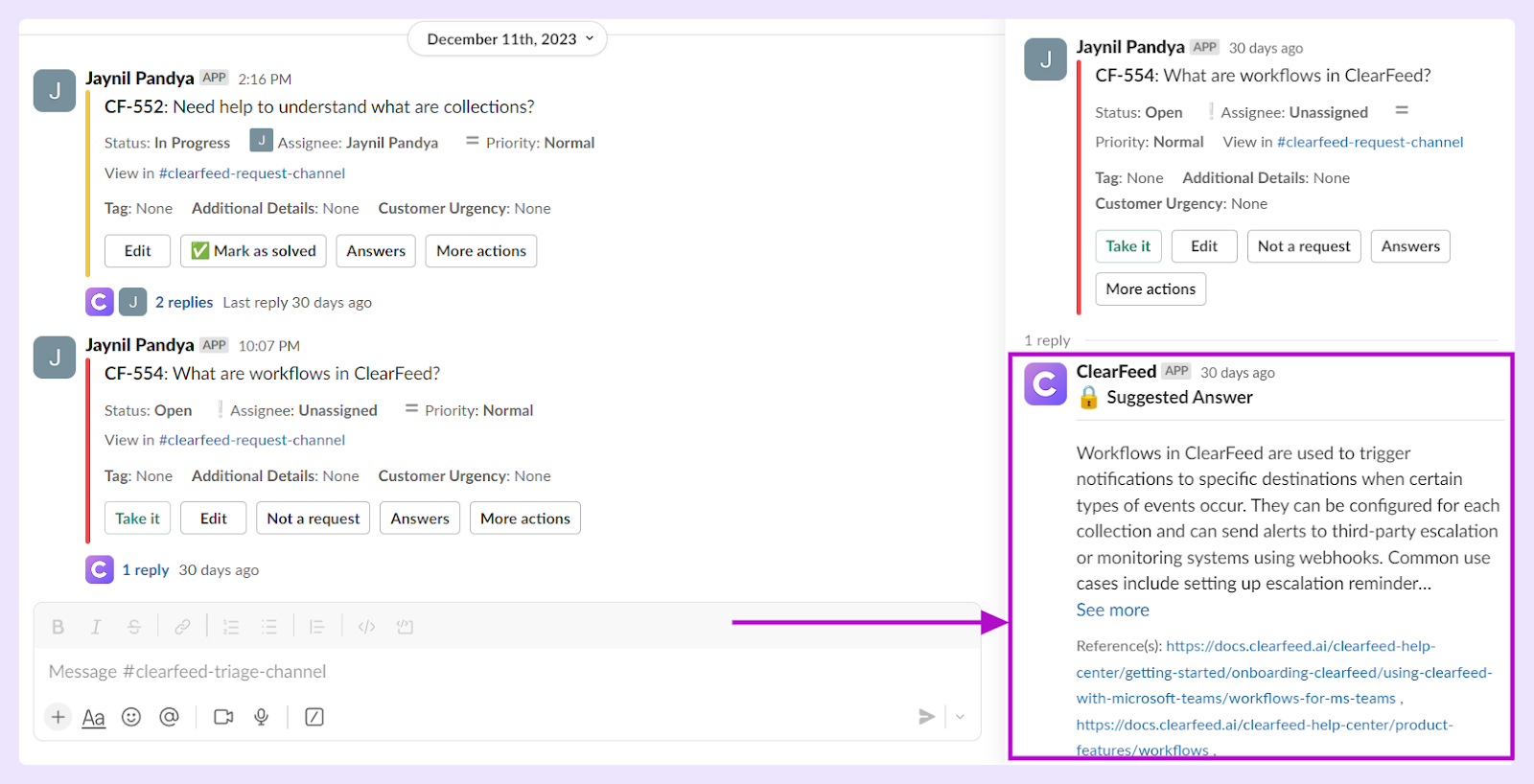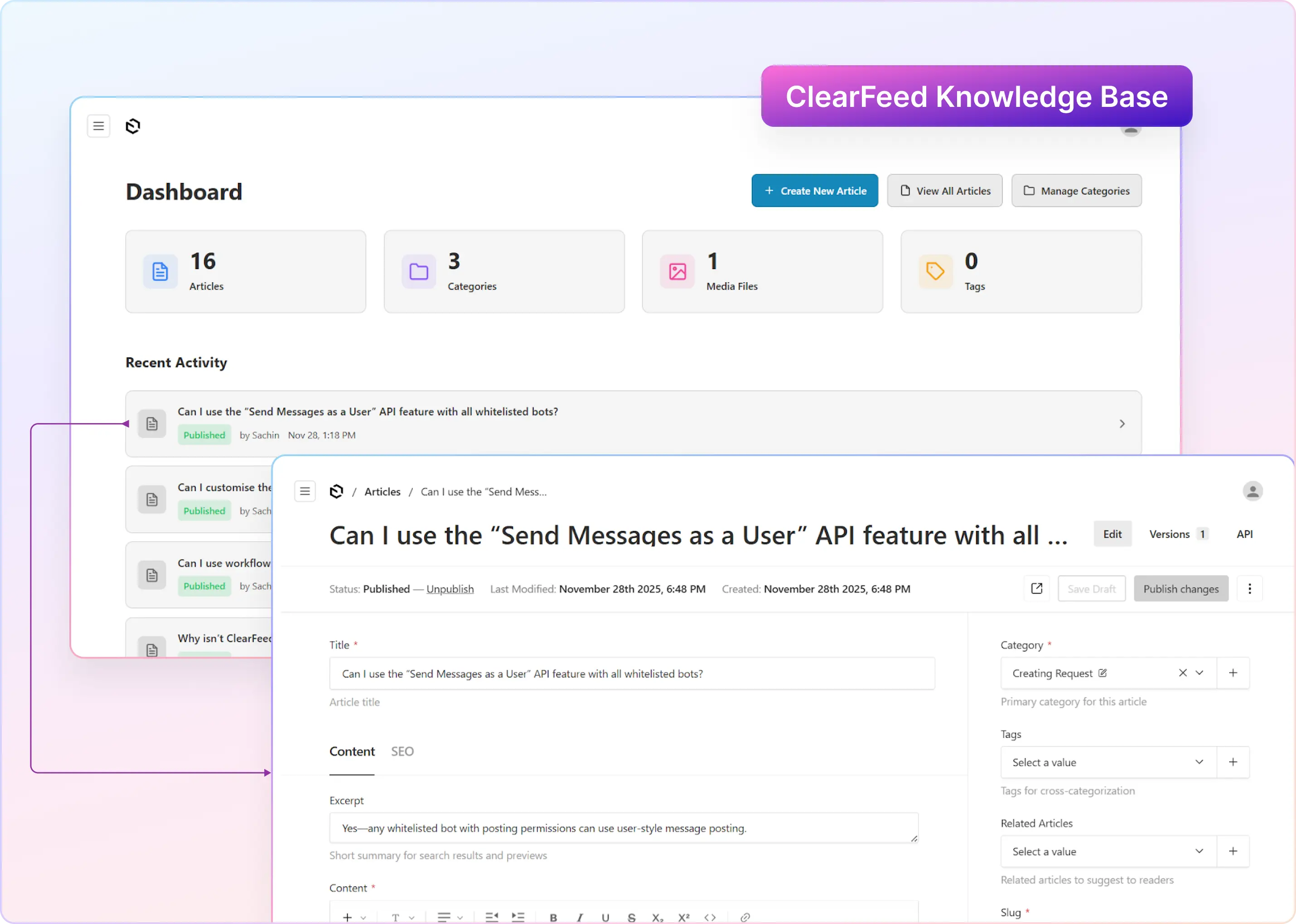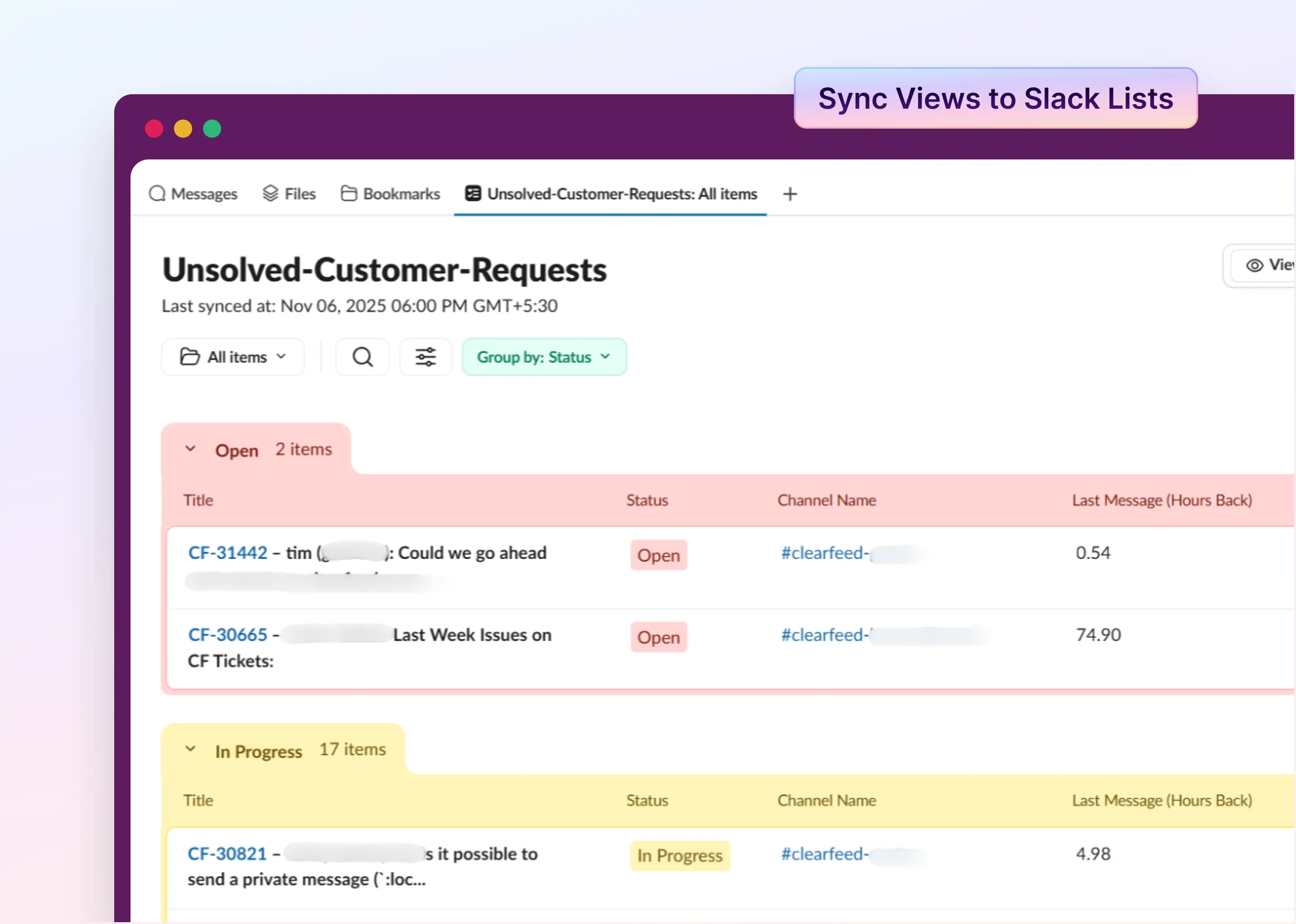The stats don't lie: according to Salesforce, 90% of customers care as much about their experience with a company as the products or services they provide. Another HubSpot research shows that nearly all customers (a whopping 90%) consider receiving a fast response essential when interacting with a business. These statistics highlight the power of prompt communication and how crucial excellent customer support is for going beyond simply fixing issues.
Customers today expect their needs and questions to be addressed quickly. Brands that fail to provide timely responses risk losing customer trust and loyalty. The takeaway is clear: being responsive must be a top priority for companies seeking to deliver exceptional service and build lasting relationships with their audience. And the secret sauce for crafting memorable experiences that keep customers returning is a conversational approach to support.
In this post, we'll explore what makes conversational support so powerful. You'll learn the key benefits of prioritizing real customer conversations and pick up tips for seamlessly integrating this approach into your business. Let's dive in!
What Is Conversational Support?
Conversational support places the customer, rather than the incident, at the center of its operations. It is a customer service strategy capitalizing on the growing popularity of messaging apps like Slack, MS Teams, AI, and chatbots.
These tools create a seamless, holistic customer service journey across multiple channels and provide a personalized experience.
Unlike traditional customer service methods, which often involve phone calls or email exchanges, conversational support allows customers to communicate with businesses conveniently and in real time through such messaging platforms.
Benefits of Conversational Support
Looking to upgrade your customer support? Let's talk about the benefits of conversational support and why now is the perfect opportunity to make the switch.
- Faster Resolution Times: No more waiting endlessly on hold or getting bounced around departments. With conversational support platforms, help is always at the customer’s fingertips. They can just send a quick message, and the agents can reply promptly - during business hours or at night. Results? Better response rates and resolution rates. This leads to a more satisfied and loyal customer base.
- Valuable Data Collection: Conversational support tools gather crucial data that can significantly impact business performance and customer satisfaction. They monitor key metrics like an agent's response time and the time taken to resolve issues, providing insights into team efficiency and areas for improvement. These tools are also adept at tracking collaboration within the team, ultimately boosting overall issue-resolution efficiency.
- Cost Efficiency: AI-powered conversational support tools can handle repetitive queries, freeing human agents to tackle more complex issues and enhancing the team's overall productivity. The effective allocation of resources could also reduce the need for additional support staff, leading to cost savings. Furthermore, they are capable of operating 24/7 and handling multiple conversations simultaneously, ensuring continuous, efficient support, delivering prompt responses, and an elevated level of customer service.
Conversational Support vs. Traditional Support: What’s the Difference
Conversational support differs from traditional support channels like ticketing, email, and phone in several ways:
Four Conversational Customer Service Channels
Conversational support typically utilizes one or more of the following channels:
Related Read: Best Live Chat Tools for Customer Support Teams

Related Read: Why Businesses Are Switching to Slack from Email for Customer Support
Getting Started with Conversational Support
Implementing conversational support requires careful planning and preparation. Here are some key steps to get started:
Step #1: Assess Business Needs and Goals
Step #2: Choose the Right Platform
Step #3: Design Conversational Flows
Step #4: Integrate with Existing Systems
Related Read: Learn how ClearFeed helps businesses understand support metrics and improve customer experience
Step #5: Set up Escalation Process
Related Read: Learn how to set up an effective escalation process to improve customer experience
Step #6: Analyze Performance
Conversational support solutions generate a wealth of data that can be used to analyze and optimize performance. Here are some key ways to measure and improve your conversational support:
Related Read: Find out how ClearFeed enables businesses to conduct CSAT surveys within Slack
Analyzing the data and insights from your conversational support solution is key to maximizing value. By regularly monitoring metrics and logs, you can identify areas needing improvement and make data-driven optimizations. With continuous analysis and enhancement, your conversational support will become smarter and more effective at resolving customer needs.
Getting the Best Out of Conversational Support with ClearFeed
ClearFeed is a conversational support platform that utilizes advanced AI to help businesses provide effective and personalized customer care. Here are tips to get the best out of conversational support with ClearFeed:
Integrated ticketing systems ensure that all customer inquiries are tracked, managed, and resolved without switching between apps. CRM integration provides a holistic view of the customer's history, allowing personalized, relevant responses. The blend with engineering tools fosters cross-departmental collaboration, which is particularly useful for technical issues.



In short, ClearFeed offers a comprehensive set of features to improve your conversational support efficiency, customer experience, and team productivity. Want to know how we can help you get started? Book a demo with our team here.
















